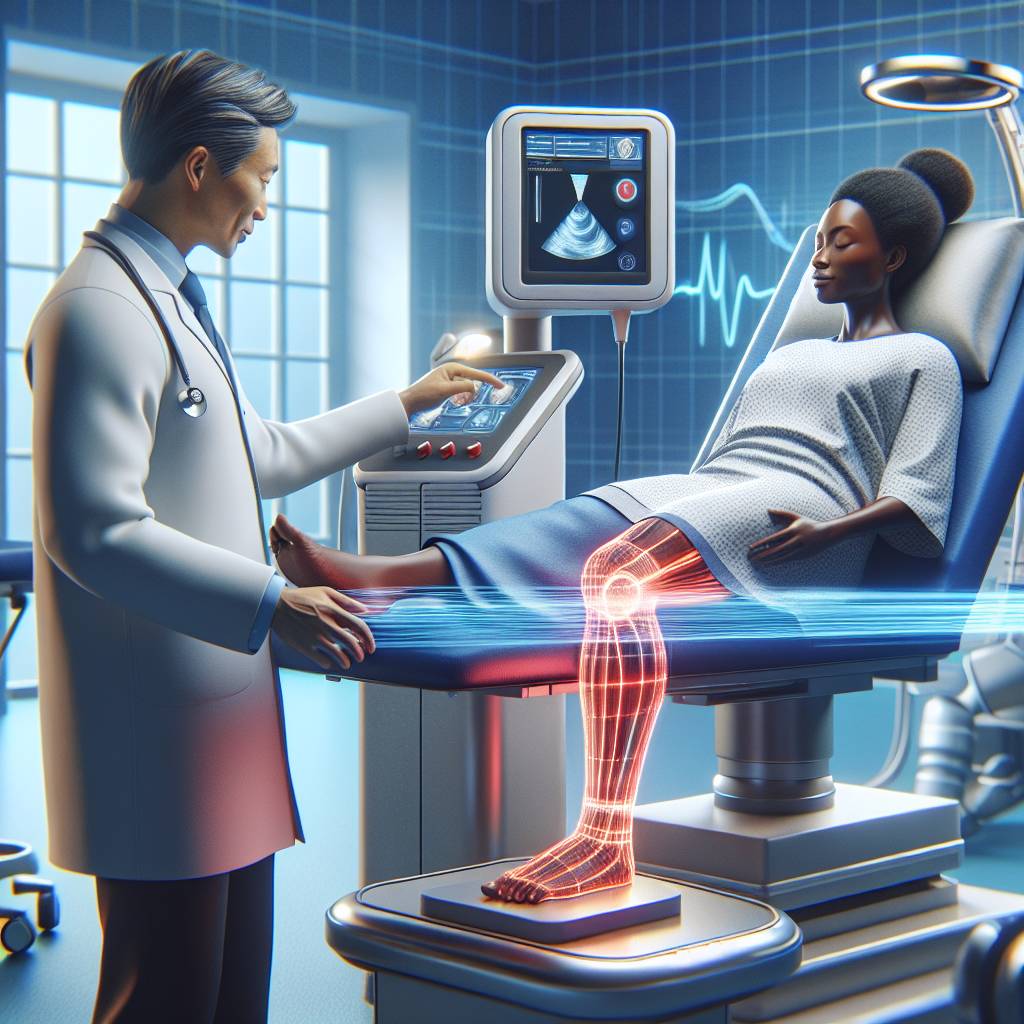EPAT Therapy (Extracorporeal Pulse Activation Therapy) a revolutionary therapy method that uses acoustic waves to accelerate healing and recovery from various musculoskeletal conditions, offers patients a non-invasive alternative to surgery or medication, which often have many side effects.
EPAT Therapy increases blood flow, cellular repair, and the body’s natural healing processes by administering high-frequency sound waves to targeted locations, making it an intriguing alternative for chronic pain or long-term soft tissue injuries.
Because of its effectiveness and reduced downtime, which let patients return to their regular activities considerably sooner than with conventional treatment approaches, this advanced therapy has especially attracted increased attention among the medical community.
Many studies point to EPAT Therapy’s success in not only relieving pain but also enhancing mobility and functionality in afflicted areas, therefore enabling people to enjoy a notable improvement in their quality of life.
Usually conducted in a sequence of sessions, the therapy is focused and effective since a qualified practitioner uses a handheld equipment to provide exactly calibrated acoustic pulses to the wounded area. Growing in popularity, EPAT Therapy has evolved into a mainstay in many orthopedic clinics, sports medical offices, and rehabilitation centers, establishing itself as a major participant in the field of non-invasive treatments for musculoskeletal discomfort.
Benefits of EPAT Therapy
Among the main advantages of EPAT therapy are:
- Usually requiring no anesthesia, non-invasive treatments help to reduce the dangers related to surgical operations.
- Shortened recovery times so that patients may continue their usual activities free from protracted periods of rest.
- Faster remission of symptoms may follow from enhanced healing processes through better blood circulation and tissue regeneration.
EPAT Therapy Side Effects
Although some of the most often mentioned side effects of EPAT Therapy are minor discomfort at the site of treatment, slight swelling or bruising, and temporary increases in pain following the procedure; most of the patients can thus continue with their daily activities without major interruption since these side effects are usually transient and go away on their own.
Furthermore important is the type of treatment—that which involves the administration of targeted shock waves—which could cause a minor aggravation of pain for a brief period following the EPAT Therapy as the body responds to the healing process started by it.
- Mild discomfort at the treatment site
- Swelling or bruising
- Temporary pain increase
- Localized soreness after treatment
Although these side effects are usually not severe, some patients may react more strongly, particularly if they have underlying medical conditions or sensitivity; thus, it is advisable for patients to be open with their healthcare providers about any concerns regarding their health history, including pre-existing conditions and present medications, which may affect their response to EPAT Therapy.
Moreover, according to the advice of licenced medical experts both before and after treatment can assist to reduce any possible side effects and improve the general effectiveness of the treatment.
| Side Effect | Duration | Management |
|---|---|---|
| Mild discomfort | 1-3 days | Ice application |
| Swelling or bruising | 3-5 days | Rest and elevation |
| Increased pain | 1-2 days | Over-the-counter pain relief |
Does EPAT Therapy Work?

Rooted in the ideas of physics and bioengineering, EPAT Therapy uses high-energy acoustic waves to induce an increase in blood circulation, hasten tissue regeneration, and reduce chronic pain, so providing a convincing alternative for those who have not yet found relief from more traditional therapeutic approaches.
Although anecdotal data from happy patients usually shows notable changes in pain levels and function following their EPAT Therapy sessions, knowing the scientific background for these assertions becomes crucial in deciding its general efficacy.
Scholarly Data Supporting EPAT Therapy
Many studies have been conducted on the efficacy of EPAT Therapy, most of which show encouraging results in treating conditions including plantar fasciitis, Achilles tendonitis, and other musculoskeletal diseases, so demonstrating that the treatment may provide not only pain relief but also functional improvements in people afflicted with these diseases.
Research and clinical studies show that patients undergoing EPAT Therapy often show a significant decrease in pain levels together with improved mobility, implying that this creative treatment could present a good substitute for either long-term medication use or invasive surgical choices.
Crucially, the present body of evidence shows that EPAT Therapy can truly be very helpful in the therapy and rehabilitation of particular orthopedic and musculoskeletal disorders as researchers keep compiling data to support its efficacy.
EPAT Shockwave Therapy
EPAT Shockwave Therapy(ESWT) is distinguished by its rapid recovery period and minimal risk of side effects, which further emphasizes its appeal to patients who require immediate relief from debilitating health conditions. Potential candidates should consistently seek the advice of healthcare professionals to ascertain the appropriateness of EPAT Therapy for their individual circumstances and to guarantee that it is consistent with their specific health objectives and treatment expectations.
The following table delineates the main components, benefits, and typical conditions that EPAT Shockwave Therapy treats in order to facilitate a more comprehensive comprehension of its operation:
| Component | Description |
|---|---|
| Acoustic Waves | High-energy sound waves that stimulate healing processes. |
| Mechanism | Promotes blood circulation, tissue regeneration, and pain relief. |
| Conditions Treated | Tendonitis, plantar fasciitis, and chronic pain syndromes. |
| Treatment Duration | Typically 15 to 30 minutes per session. |
| Session Frequency | Number of sessions varies based on condition severity. |
EPAT Therapy Reviews
It is essential for prospective patients who are contemplating incorporating EPAT therapy into their healthcare regimen to comprehend how individuals perceive their journeys with the treatment, from clinical observations documenting improved healing times to testimonials highlighting pain relief. Additionally, numerous patients have courageously shared their narratives online, providing a diverse array of viewpoints that exemplify the potential advantages and constraints of EPAT therapy in real-world scenarios.
Numerous evaluators have praised EPAT therapy for its non-surgical approach and minimal recovery time, claiming that they have experienced substantial pain relief after only a few sessions.
For example, a patient expressed her surprise at the rapid improvement in her condition following the commencement of EPAT therapy, stating, “After years of chronic tendonitis, I was astounded by the rapidity with which I began to feel better. The initial session alone was a significant improvement.” This favorable feedback is additionally corroborated by additional testimonials that indicate that EPAT therapy may be a viable treatment option for soft tissue injuries, including Achilles tendonitis and plantar fasciitis.
In order to provide a more organized summary of the feedback received regarding EPAT therapy, the following is a concise outline of some of the most frequently expressed sentiments by patients who have undergone this treatment:
- After only a few sessions of EPAT therapy, numerous patients have reported substantial pain reductions, frequently indicating that they were able to resume their daily activities with greater comfort.
- Numerous individuals have expressed relief at the prospect of avoiding more invasive surgical options, as the non-invasive nature of EPAT therapy has been emphasized as a significant advantage.
- The cost-effectiveness of the therapy in comparison to other treatment modalities has been a topic of discussion among numerous users, who have emphasized the value they believe they have received in consideration of their results.
- Although the majority of patients have reported successful outcomes, a few have noted that the results can vary significantly based on the individual and the specific condition being treated.
When one considers the vast spectrum of reviews available, it is clear that although EPAT therapy has received compliments from many sources for its capacity to reduce pain and hasten recovery times in a number of conditions, patient experiences and outcomes still vary somewhat. Thus, it is indisputable that the final outcome of this treatment can be greatly influenced by personal elements including the particular type of the damage, the general condition of the patient, and compliance to the treatment plan.
Frequently Asked Questions
Under what circumstances might EPAT therapy be used?
Plantar fasciitis, tendinitis, sports injuries, and chronic pain in areas including the back and knees can all be treated with EPAT therapy.
Does EPAT therapy hurt?
Since EPAT treatment is less intrusive than many conventional treatment choices, most patients report less pain during the operation; so, the process is usually well-tolerated.
An EPAT therapy session lasts what length of time?
Depending on the illness being treated and the particular regions of emphasis, an EPAT therapy session usually runs 15 to 30 minutes.
Usually, EPAT therapy calls for how many sessions?
Though most people need 3 to 5 treatments, separated a week, to get best outcomes, the number of sessions required can vary.
